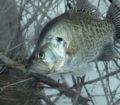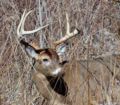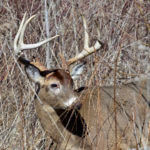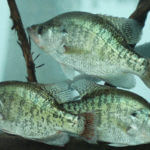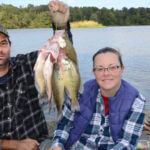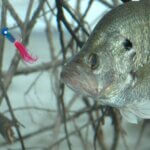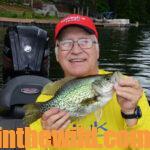Editor’s Note: When we think about great places to fish for crappie and to hunt, we often think of state lands, U.S. National Forest lands (https://www.fs.fed.us/) and the Bureau of Land Management (https://www.blm.gov/) properties. But there are thousands of acres of land you can hunt and remote places to fish in most states that the U.S. Army Corps of Engineers (https://www.usace.army.mil/) owns. Contact the Department of Fish and Wildlife in your state, the U.S. Forest Service, the Bureau of Land Management and the U.S. Army Corps of Engineers to learn of remote places you can hunt and fish for free or nearly free near where you live. Central/west Alabama and most of Alabama near the Mississippi border are probably the least-fished waterways in Alabama. Few people know about them, they’re not near any population centers, and there’s plenty of other waters you can fish closer to home. Many states home waters like these. However, that’s the reason that Gainesville and Aliceville lakes are two of the best crappie lakes in Alabama. Another interesting fact about these two lakes is they have a large volume of backwaters, and from October through February each year, the crappie generally will hold in 4-8 feet of water, since the backwaters stay warmer all year long than the main river does. To get the best information on how, where and when to catch crappie on Aliceville Lake this month, I went to the source that should have and does have some of the best fishing information on this reservoir – Chris McKee (205-339-5716, [email protected]), the district fisheries biologist for District III, which includes the Tombigbee and the Warrior rivers down to Demopolis.
 I had gone to the Aliceville Lake region before the lake was flooded and walked on what’s now the bottom of Aliceville Lake with one of the foresters who was cutting timber in much of what’s now known as the backwaters. The U.S. Army Corps of Engineers asked the timber cutters to leave stumps 3-4 feet high on the bottom to create ideal habitat for crappie.
I had gone to the Aliceville Lake region before the lake was flooded and walked on what’s now the bottom of Aliceville Lake with one of the foresters who was cutting timber in much of what’s now known as the backwaters. The U.S. Army Corps of Engineers asked the timber cutters to leave stumps 3-4 feet high on the bottom to create ideal habitat for crappie.
Also, the Corps of Engineers channelized the Tombigbee River, making it straighter and deeper than the old Tombigbee River. As we know, rivers don’t run in straight lines but instead meander and home numbers of bends and turns in them. So, when the Tombigbee River was channelized, all those old creek and old riverbeds became backwater areas off the new Aliceville Lake.
McKee explains that, “Years when this section of the Timbigbee Waterway – Aliceville Lake – has floods, crappie get off very-successful spawns. The crappie that are spawned in the flood will start showing up in the creels of fishermen about three years after the flood. A three-year-old crappie usually will be more than 9 inches, which is the minimum length limit for keeping crappie.”
McKee also mentions that water clarity helps to determine how deep to fish to catch crappie on Aliceville. “If you’re fishing 10-12 foot deep when you only have 1 foot of visibility, then you’re probably fishing way below where the crappie are holding. When the river’s muddy, you want to fish about three times deeper than the clarity of the water. If you hold your crappie jig or your shiner minnow in the water and let it down about a foot, and you can’t see it any more, than you need to fish in about three-foot-deep water, because crappie often feed just under the mud line.”
 Another reason that crappie fishing should be good to great this fall and winter of 2018, according to McKee, is that in 2013 and 2016, the Tombigbee River had major flooding, and the crappie got off tremendous spawns. Those two-year classes of crappie should be the majority of the keeper crappie you’ll catch this fall and winter. The 2016 crappie should be over 9-inches long, and the 2013 crappie should be 11-12 inches long or more.
Another reason that crappie fishing should be good to great this fall and winter of 2018, according to McKee, is that in 2013 and 2016, the Tombigbee River had major flooding, and the crappie got off tremendous spawns. Those two-year classes of crappie should be the majority of the keeper crappie you’ll catch this fall and winter. The 2016 crappie should be over 9-inches long, and the 2013 crappie should be 11-12 inches long or more.
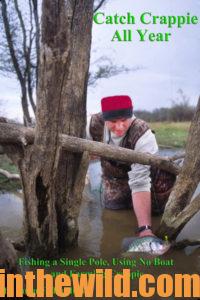
 To learn more about crappie fishing, check out John E. Phillips’ book, “Catch Crappie All Year: Fishing a Single Pole, Using No Boat and Farming Crappie,” available in Kindle and paperback at http://amzn.to/16AzIZi. For a free eBook, “The Crappie Catcher’s Cookbook,” go to https://www.emailmeform.com/builder/form/eb81136oQJ1g2fe9q6RNd73jh.
To learn more about crappie fishing, check out John E. Phillips’ book, “Catch Crappie All Year: Fishing a Single Pole, Using No Boat and Farming Crappie,” available in Kindle and paperback at http://amzn.to/16AzIZi. For a free eBook, “The Crappie Catcher’s Cookbook,” go to https://www.emailmeform.com/builder/form/eb81136oQJ1g2fe9q6RNd73jh.

